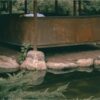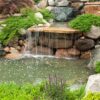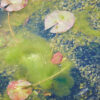Pond Maintenance Tips During Autumn / Autumn is the season when the ornamental plants change to the falling leaves, which is an ideal time to maintain and clean your pond.
During autumn your fishes, aquatic plants, and other marine life need attention to make them prepare for facing the upcoming effects of the winters. For this purpose, it is necessary to maintain the pond and make it safe and healthy for aquatic life. If we do not maintain the pond in autumn, the undesirable organics (wildlife waste, leaves, etc.) can produce a sludge layer at the bottom of the pond. This sludge layer can become poisonous if it is not treated on time.

Despite being taking care of the pond throughout the year, autumn is the season when you need to do proper pond maintenance to get rid of the algae and other harmful products. The good or bad health of your pond does not depend upon luck but it depends on how you care. If you own a pond, then the following tips will be useful for you to keep your pond in an unharmed condition:
- Remove Fallen Leaves and Debris
To maintain the pond during autumn, the very first step is to remove all the fallen leaves and debris from the pond surface and its surroundings. You can scoop out the leaves by using a long-handled net from the water.
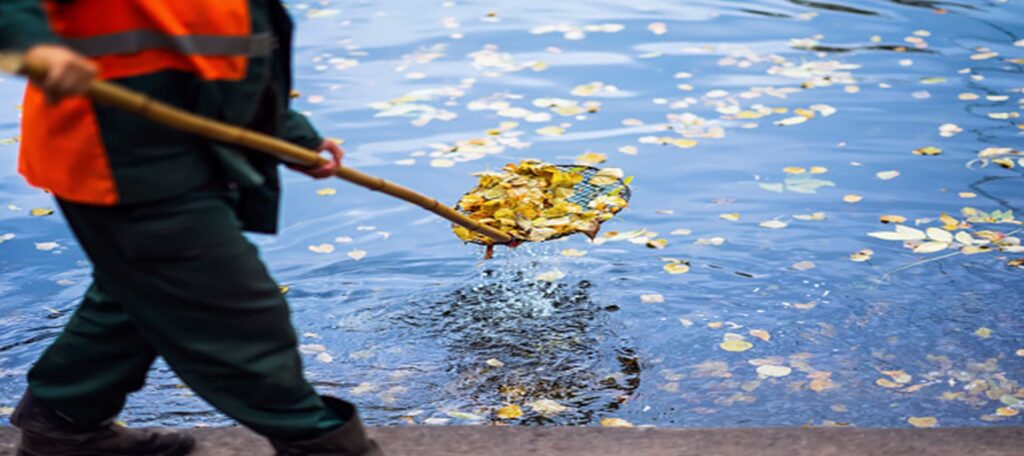
You can use a pond skimmer that floats in the pond and help to collect the leaves before they sink. For more protection, cover the complete surface area of your pond with a net and when the leaves fall on it, roll the net up to remove the leaves easily. Stainless steel fish-net can also be used to eliminate unnecessary debris from the water.
Protection from degradable material (leaves etc.) is necessary because if they are not removed, they will decay at the bottom of the pond and produce toxic chemicals and gases that can further harm the fishes and other aquatic life.
2. Clean the bottom
The bottom of your pond can become dirty very easily during autumn due to the accumulation of organic wastes. The decaying of these organic wastes produces a sludge layer. Although this sludge is useful for the ecosystem of your pond, excessive sludge can become problematic. When the nitrogen cycle remains incomplete due to the insufficient supply of oxygen, a very bad smell is produced from the sludge that is unhealthy for the fish. This unpleasant sludge and other waste materials are therefore necessary to remove.
You can use a pond vacuum cleaner to remove any debris or waste particles from the bottom of the pond before it decays. To remove the sludge from the pond bottom, you can also use a net. This sludge can further be used as a fertilizer to grow flowers and vegetables. If you are short on time, the fastest way to clean the unpleasant sludge is the “Sludge Treatment”. This treatment can remove the silt, nitrite, and ammonia from the bottom of your pond in a single act. Along with the cleaning, the treatment also boosts the working of your filter while your fishes and plants remain unharmed.
3. Neat-up the Plants
During autumn, putting oxygenating and aquatic plants in the pond can provide sufficient levels of oxygen to marine life. Make sure that the plants of your pond are neat and clean. Try to remove and cut the unnecessary plant growth regularly. Trim the water lilies and other pond plants to keep the pond tidy. Shorten the clump size of the rafting pond plants so that when the winters arrive, the required amount of light can enter inside the water to reach the submerged plants or oxygenating pond plants. Do skimming regularly if long trees and shrubs surround your pond because in this case there is a high chance of falling leaves into the water. Remove the fading flowers and leaves from the plants placed outside of the pond so that they cannot pollute the water by falling in it.
Do not add fertilizer for your plants in the pond during fall as their leaves are already dying. Keep the roots of the aquatic plants into the deep side of the pond so they can survive, otherwise, the dead material will affect the quality of pond water.
4. Feed your Fish Less
Fishes stores a lot of energy during summer from their protein-enriched feed that can be used during winters. That is why fishes do not need protein-containing feed during winters. Fishes hibernate themselves when the temperature drops down to 50oF so keep an eye on water temperature by using the pond thermometer.
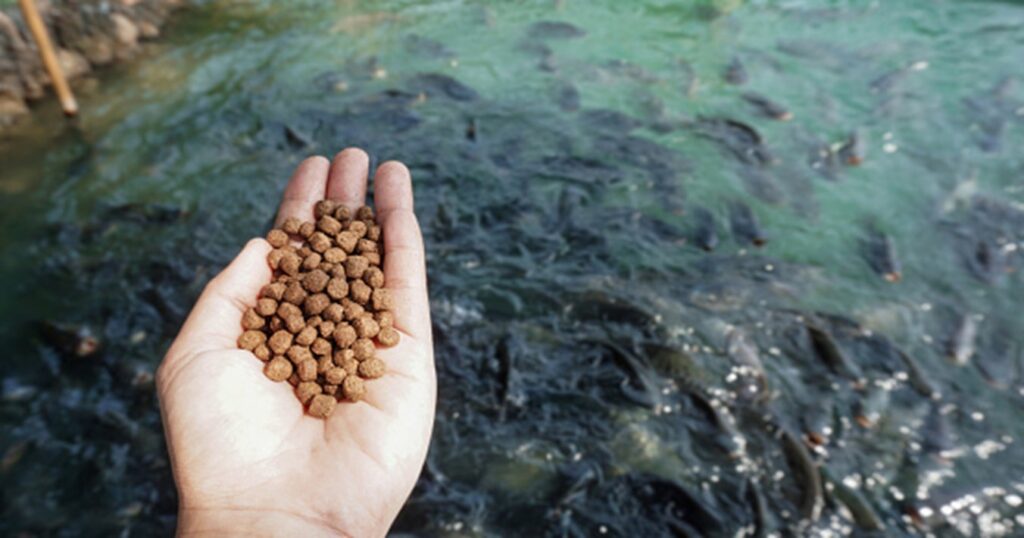
To avoid metabolic difficulties during hibernation, stop feeding the fish or limit their feed to twice or thrice a time per week. If you do not stop over-feeding, the unnecessary food particles will produce nutrients for some algae that may be present in the pond and can cause the formation of a sludge layer making your pond poisonous. During this time, you must only feed cold water fish food having low protein and high carbohydrates.
To adjust the feed amount automatically, you can use an automatic fish feeder. For the peaceful settlement of fish, stop feeding your fish for few days before and after the cleaning. This will also prevent food from wastage.
5. Medicate your Pond
Medicate your pond with some disinfectants in the autumn to disable the fast regeneration of pathogens. Otherwise, these pathogens and parasites will settle in the pond during winter and as soon as the spring arrives, they will attack your fish when they have a weak immune system. A medicated pond during autumn helps to make the life of your fish easy during spring.
If an inappropriate growth of pathogens occurs in your pond, you can use curative treatments like using pond herbicides and copper sulfate. When the temperature of the pond water drops below 40°F, you have to stop the curative treatment and start the preventive treatments. The preventive treatments include adding pond bacteria that help in fighting against the algae and sludge layer produced in the pond. However, one of the most effective preventive treatments for fish diseases is “Chemical disinfection”. Disinfectants like chlorinated lime, burnt lime, formaldehyde, potassium permanganate, jodonal, etc. are usually used. You can use nitrogen lime to get rid of “myxospores”. To disinfect the bottom of your pond, burnt lime or chlorinated lime is used. For treating the troughs, concrete channels, and other components of your pond, the disinfectants like chlorseptol, chloramine, chlorinated lime, water solutions of formaldehyde, and natrium hydroxide are used.
You can also use an alternative of chemical treatments that include the use of “barley straw extract”. The special formula of the extract breaks down the sludge because of the presence of enzymes while keeping the aquatic life unharmed. This extract is very effective and eco-friendly to fight blanket weed (freshwater alga) and maintains the clarity of water keeping the filter pads clean.
6. Add Bacteria in the Pond
Treating your pond during autumn by the addition of bacteria helps to protect water from algae and green water. The bacterial treatment breaks the waste particles, sludge, and leaves present in your pond making it clean and fresh. Probiotic bacteria of good quality can be used to make the pond healthy.
These probiotic bacteria eat the waste materials including the debris and the undesirable organics and digest them gradually. This process decreases the amount of H2S which is toxic for the pond. As soon as your pond’s water temperature drops down and becomes less than 50oF, add cold water bacteria. It is suggested to add the bacteria twice a week for 2 weeks and afterward add it only once a week. Proper use of cold water bacteria maintains the quality of pond water by making it clean and clear. Stop adding cold water bacteria when the water starts freezing.
7. Check the Quality of Pond water
The most important part of maintaining a pond during autumn is the regular assessment of the quality of water. It plays an important role in the survival and health of fish. During autumn, the pH value and KH (carbonate hardness) level may change due to the fish waste, acidic rain, and algae of spring and summer. Proper monitoring is required to adjust the pondwater quality on regular basis. To test the water quality and finding out any issues, you can use a “water test kit” and a “nitrate testing kit”.
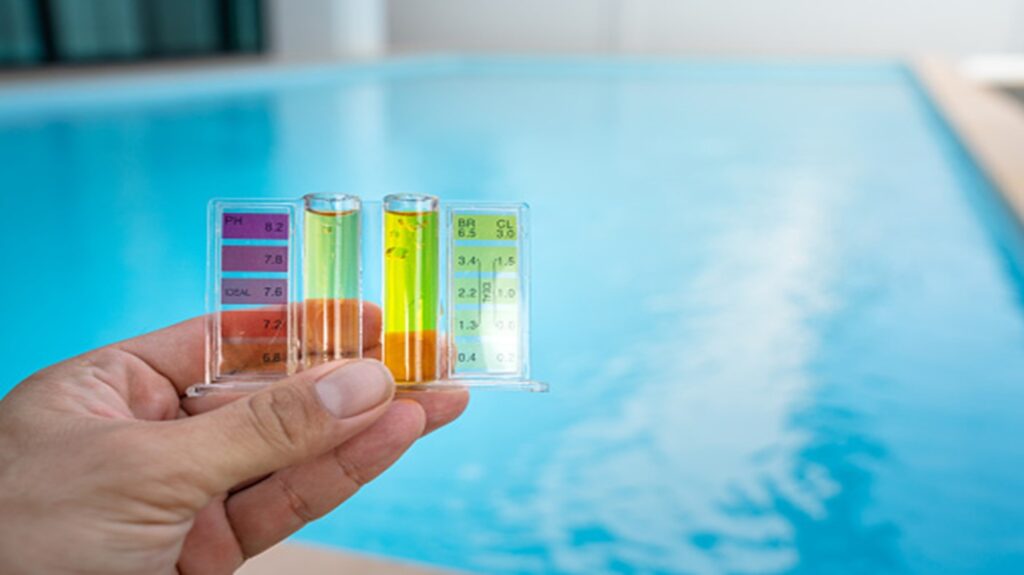
The KH value for your pond must be greater than 5 while the pH value should lie between 7 to 8.3. To maintain these values instantly, you can use a “Pond Equaliser”. The Pond Equaliser not only stabilizes the pH and KH values but also eliminates any heavy metals or ammonia from the water. You can also do few water changes in case you are monitoring a high value of nitrates like more than 50ppm. Adding a “Starter Bacteria” will help in the regeneration of aerobic bacteria. Such type of change in the water for few weeks will help in the dilution of excessive nitrates. If the pond water is unhealthy and the required values are not up to the mark then it will make the life of fishes and other aquatic plants tough to survive.
8. Look after Pond Filters and Pumps
Look after your pond filters and pumps thoroughly during the autumn as you have to prepare your pond for upcoming winters. During autumn, the activity of fish slows down so it is a perfect time to make variations in the settings of filters and pumps. Some people continue to keep them in the pond while some prefer to remove them.
If you want to remove the filters and pumps for winters, you have to clean them in the autumn, keep them in a dry place, and re-install them as the weather starts warming. This could save your electricity bill too. Coldwater already possesses plenty of oxygen so you have an option to switch off your pump. However, if you want to keep them in the pond then make sure they are deep enough to remain unfrozen.
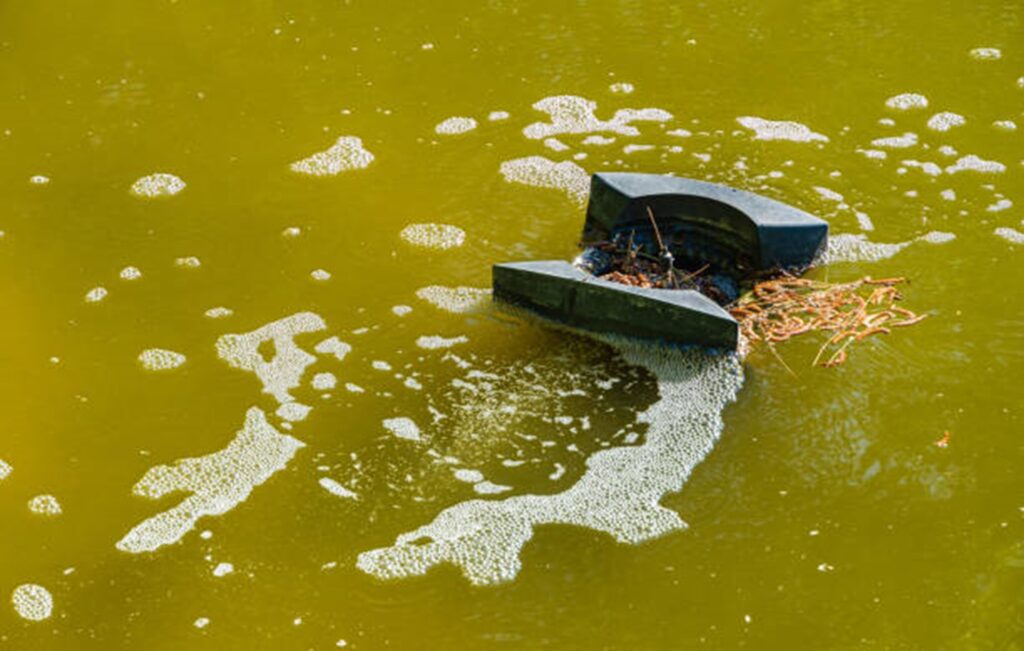
To maintain the stability of water temperature for the forthcoming winters, you have to reduce the flow rate of pumps during autumn. Clean the debris and algae from the pumps and filters on monthly basis during the fall season. Continue this monthly cleaning in winter to minimize your effort of cleaning for spring. You have to clean the filters and pumps from outside and inside including all pieces. A good practice is to use rainwater or pond water for cleaning the parts of the filters and pump. This is because the rainwater and pond water is free of chlorine and will not affect the life of bacteria.
Autumn is an ideal time to examine the leakages and damages in the pond liners and other channels. Complete all the required repairs before the start of winters to maintain the channels in an unharmed condition.
Bottom Line
A pond is one of the most beautiful additions to your home garden. The best time to relax and enjoy your outdoor pond is the autumn as there is no summer heat but cool mornings and beautiful fall foliage. To enjoy the autumn and safeguard a healthier spring pond, it is important to take necessary precautionary steps. Autumn is the best time to maintain your pond as marine creatures are very least active during this season.
Prepare your pond for winters by keeping in mind the maintenance tips discussed in this article. By following the discussed key points, you can be able to reduce the workforce required to sustain the health of your pond. Accurate use of water treatment for the prevention of fish diseases will help you to have a parasite-free and pathogen-free pond. Taking into consideration the above-mentioned tips will let you have a perfect pond ecosystem to fight the harsh effects of changing weather.


